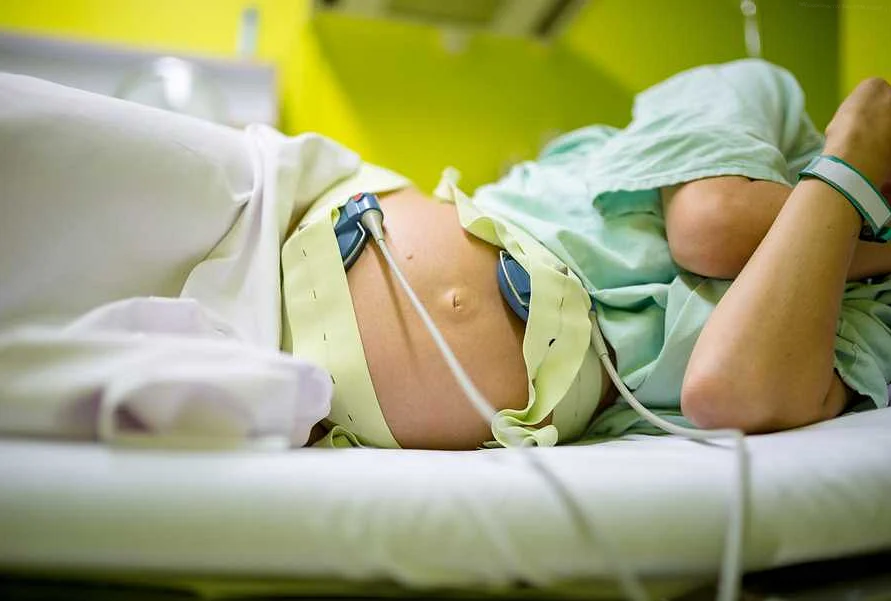Impact of Caesarean Section on the Health of Expectant Mothers: Insights from a St. Petersburg State Pediatric Medical University Obstetrician-Gynecologist
An obstetrician-gynecologist from St. Petersburg State Pediatric Medical University explains the potential impact of a caesarean section on the health of the expectant mother. Learn about the risks, benefits, and recovery process associated with this type of delivery.
A caesarean section, commonly referred to as a C-section, is a surgical procedure used to deliver a baby through incisions made in the mother’s abdomen and uterus. While this procedure is necessary in certain cases to ensure the health and safety of both the mother and child, it is important to understand the potential impact it can have on the health of expectant mothers.
As an experienced obstetrician-gynecologist, I have witnessed the physical and emotional effects that a caesarean section can have on women. One of the most common concerns is the increased risk of infection. The surgical incisions made during a C-section create an open wound, which can easily become infected if proper care is not taken. Antibiotics are typically prescribed to minimize the risk, but it is crucial for women to closely follow post-operative instructions to reduce the likelihood of complications.
Additionally, a caesarean section can lead to longer recovery times compared to vaginal delivery. The abdominal incision requires time to heal, and women may experience pain, discomfort, and limited mobility during this period. It is important for expectant mothers who undergo a C-section to take the necessary time to rest and allow their bodies to heal properly. Adequate post-operative care, pain management, and physical therapy may be recommended to aid in the healing process.
Moreover, caesarean sections have been associated with an increased risk of certain complications in future pregnancies. The uterine scar from a previous C-section can make subsequent pregnancies more challenging. Women who have had a previous C-section may be at a higher risk for placenta previa, in which the placenta partially or completely covers the cervix. This condition can result in bleeding, increased risk of pre-term birth, and potential harm to both the mother and baby. It is important for expectant mothers with a history of C-sections to closely monitor their pregnancies and work closely with their healthcare providers to ensure a safe delivery.
In conclusion, while a caesarean section can be a life-saving procedure, it is essential for expectant mothers to be aware of the potential effects it can have on their health. Proper post-operative care, including infection prevention and appropriate rest, are crucial for a smooth recovery. Regular monitoring and communication with healthcare providers can help identify and manage any potential complications in future pregnancies. As an obstetrician-gynecologist, it is my goal to provide expectant mothers with the knowledge and support they need to navigate the challenges and make informed decisions regarding their childbirth experience.
Importance of Understanding the Impact

Caesarean sections, also known as C-sections, have become increasingly common in modern obstetrics. While this surgical procedure can be necessary and lifesaving in certain situations, it is important for expectant mothers to understand the potential impact it can have on their health.
One of the primary concerns regarding C-sections is the increased risk of complications compared to vaginal deliveries. This includes a higher chance of infection, bleeding, blood clots, and injury to surrounding organs. By understanding the potential risks, expectant mothers can make informed decisions about their birthing options and work closely with their healthcare provider to minimize these risks.
C-sections also have implications for future pregnancies. The scar tissue from a previous C-section can increase the risk of placenta complications, such as placenta previa or placenta accreta, in subsequent pregnancies. These conditions can lead to heavy bleeding and may require additional medical interventions. It is crucial for women who have undergone a C-section to discuss these risks with their obstetrician-gynecologist and plan their future pregnancies accordingly.
Furthermore, C-sections can impact the recovery process and the bonding between the mother and baby. The recovery time after a C-section is typically longer compared to a vaginal delivery, which may affect the mother’s ability to care for her newborn. Breastfeeding can also be more challenging following a C-section, as the pain and discomfort may make it difficult for the mother to establish a successful breastfeeding routine. Understanding these challenges can help expectant mothers prepare for their postpartum period and seek the necessary support to ensure a positive transition into motherhood.
By understanding the potential impact of a C-section, expectant mothers can make informed decisions about their birthing plans, understand the importance of postpartum care, and work closely with their healthcare provider to optimize their health and the health of their baby.
Risks and Complications Associated with Caesarean Section
A caesarean section, although considered a safe procedure, carries certain risks and complications that expectant mothers should be aware of. Some of the common risks associated with a caesarean section include:
- Infection: The surgical incision made during a caesarean section can become infected, leading to complications.
- Blood loss: Caesarean sections involve a higher risk of blood loss compared to vaginal deliveries. Excessive blood loss can lead to anemia or the need for a blood transfusion.
- Adverse reaction to anesthesia: Some women may experience an adverse reaction to the anesthesia used during a caesarean section, which can cause nausea, vomiting, or difficulty breathing.
- Blood clots: Women who undergo a caesarean section are at a higher risk of developing blood clots in the legs or lungs.
- Delayed recovery: Compared to a vaginal delivery, the recovery time after a caesarean section is usually longer. It may take several weeks for the incision to heal completely.
In addition to these risks, there are potential complications that can arise during or after a caesarean section. These complications include:
- Uterine rupture: In rare cases, the scar tissue from a previous caesarean section can tear during labor, leading to uterine rupture. This can be life-threatening for both the mother and baby.
- Wound dehiscence: The incision made during a caesarean section may reopen or split open, causing a wound dehiscence. This can result in infection and may require additional medical intervention.
- Placenta accreta: In some cases, the placenta may grow too deeply into the uterine wall, causing placenta accreta. This can lead to severe bleeding during delivery and may require a hysterectomy.
- Adhesions: Scar tissue can form inside the abdomen after a caesarean section, causing organs to stick together. This can lead to chronic pain and difficulty with future surgeries.
It is important for expectant mothers to discuss the risks and potential complications of a caesarean section with their obstetrician-gynecologist. By understanding these risks, women can make informed decisions about their birthing options and take necessary precautions to ensure a safe delivery.
Long-term Effects on Physical Health

Caesarean sections have been shown to have potential long-term effects on the physical health of expectant mothers. While this surgical procedure can be life-saving in certain situations, it is important to understand and consider the potential consequences it may have on women’s health in the long run.
One potential long-term effect is an increased risk of complications in future pregnancies. Studies have suggested that women who have had a previous caesarean section may be at higher risk for complications such as placenta previa, placenta accreta, and uterine rupture in subsequent pregnancies. These complications can pose serious risks to both the mother and the baby, and may require additional surgical procedures or interventions.
In addition to the increased risk of complications in future pregnancies, caesarean sections have also been associated with a higher likelihood of developing certain health conditions later in life. Research has shown that women who have undergone this surgical procedure may have an increased risk of developing cardiovascular diseases, such as high blood pressure and heart disease. They may also be more prone to developing respiratory problems, such as asthma, due to the potential impact on lung development during a caesarean birth.
Furthermore, caesarean sections can also have an impact on a woman’s overall physical well-being and body image. The recovery process after a caesarean section can be longer and more difficult compared to vaginal deliveries, which can affect a woman’s ability to engage in physical activities or maintain a healthy lifestyle. This can lead to weight gain, decreased fitness levels, and a negative impact on body image and self-esteem.
It is important for women who have had a caesarean section to be aware of these potential long-term effects on their physical health. Regular check-ups with healthcare providers, maintaining a healthy lifestyle, and addressing any concerns or symptoms promptly can help to mitigate these risks and promote overall well-being.
| Significance: | Increased risk of placenta previa, placenta accreta, and uterine rupture | Higher likelihood of high blood pressure and heart disease | Possible development of asthma | Longer recovery process and potential impact on physical activities and lifestyle |